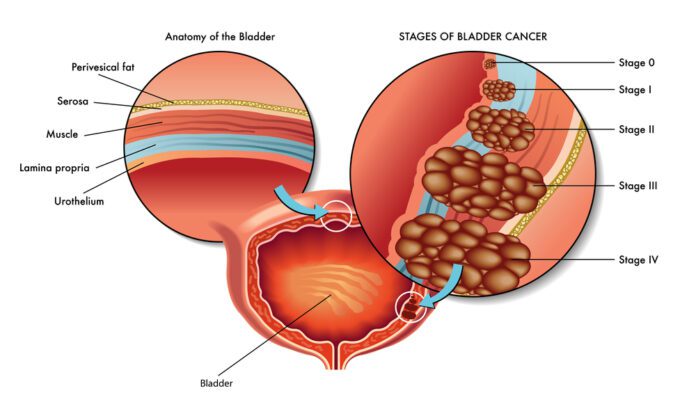Overview Of Uncontrollable Urination
Uncontrollable urination is also known as urinary incontinence.
Urinary (or bladder) incontinence occurs when urine leaks from the urethra. The urethra carries urine from your bladder out of your body.
The main types of urinary incontinence are:
- Stress incontinence — occurs during actions like sneezing, laughing and coughing.
- Urge incontinence — occurs as a result of a strong urge to urinate immediately.
- Overflow incontinence — occurs when the volume of urine in the bladder exceeds its capacity.
Health care professionals often refer to urinary incontinence as an overactive bladder. This happens when the bladder muscles and certain nerves do not work together.
A person can have urinary and stress incontinence at the same time and this is described as mixed incontinence.
Causes Of Uncontrollable Urination
Incontinence can happen for many reasons. These include urinary tract infections, vaginal infections and constipation.
Bladder control problems are also caused by some medication. Childbirth, ageing, menopause, contribute to women’s bladder control problems.
Aging and prostate problems may also cause urinary incontinence in men.
When incontinence persists, the cause may be:
- Weak bladder muscles
- Overactive bladder muscles
- Weak pelvic floor muscles
- Diseases such as multiple sclerosis, diabetes, or Parkinson’s disease damaging nerves that control the bladder
- Blockage from an enlarged prostate
- Diseases that may make getting to the toilet in time difficult such as arthritis.
- Pelvic organ prolapse (when pelvic organs such as the bladder, uterus or rectum shift out of their normal place into the vagina).
Incontinence in men is mostly related to the prostate gland.
Male incontinence may be caused by:
- Prostatitis (The inflammation of the prostate gland)
- Injury to nerves or muscles from surgery
- An enlarged prostate gland
Symptoms Of Uncontrollable Urination
Symptoms and signs of urinary incontinence include
- Leaking urine during everyday activities
- Sudden, strong urge to urinate
- Inability to reach a toilet in time
- Bedwetting
Treatment Of Uncontrollable Urination
Contact a health care provider for tests and treatment if you have symptoms of incontinence. Your treatment for incontinence will depend on the cause.
There are different approaches to treating urinary incontinence:
These include lifestyle changes that may be needed alongside other treatments.
- Ensure regular bowel movements to avoid constipation by increasing the fiber in your diet.
- Quit smoking to reduce bladder irritation and coughing.
- Avoid alcohol and caffeinated drinks, which can stimulate your bladder.
- Lose weight if necessary.
- Avoid foods and drinks that could irritate your bladder.
- Ensure your blood sugar under control if you have diabetes.
Bladder retraining and pelvic floor exercises.
This retraining helps you better control your bladder. Kegel exercises help you strengthen the muscles of your pelvic floor.
People often benefit from formal bladder strengthening and retraining with a pelvic floor specialist.
Medicines
Your provider may prescribe drugs that help prevent muscle spasms, relax the bladder, and improve bladder function depending on the type of incontinence you have.
Your healthcare provider can also help you manage side effects.
Surgery
Your provider may recommend surgery if other treatments do not work or you have severe incontinence.
The surgery type will depend on:
- Type of incontinence
- Severity of symptoms
- Cause of incontinence
A catheter may be needed if you have overflow incontinence or you cannot fully empty your bladder.
You may use a catheter that stays in long-term, or one that you can put in and take out yourself.
Bladder nerve stimulation
Electrical nerve stimulation can also be used to treat incontinence. This treatment reprograms bladder reflexes. For this treatment, a stimulator can be inserted through the skin near a nerve in the leg.
A battery-operated implant, similar to a pacemaker, can also be placed under the skin in the lower back.
Botox injections
Incontinence can sometimes be treated with an onabotulinum injection (also known as Botox).
This injection relaxes the bladder muscles increasing the storage capacity of the bladder. It is delivered through a cystoscope (a thin tube with a camera on the end).
This procedure is mostly done in the provider’s office.
Other
Managing Urinary Incontinence
Aside from bladder control training, medicines can help empty the bladder during urination or tighten muscles to lessen leakage.
Women can use estrogen vaginal cream to help relieve stress or incontinence. A low dose of estrogen cream is applied to the vaginal walls and urethral tissue.
A doctor may inject a substance to thicken the area around the urethra to help close the bladder opening. This treatment may be repeated.
Some women can use a urethral insert or a pessary to prevent leaking in a prolapsed bladder or vagina.
Surgery can also improve or cure incontinence if it is caused by a blockage due to an enlarged prostate or a change in the position of the bladder.
Furniture pads, adult diapers, urine deodorizing pills, and special skin cleansers can also help the situation.



